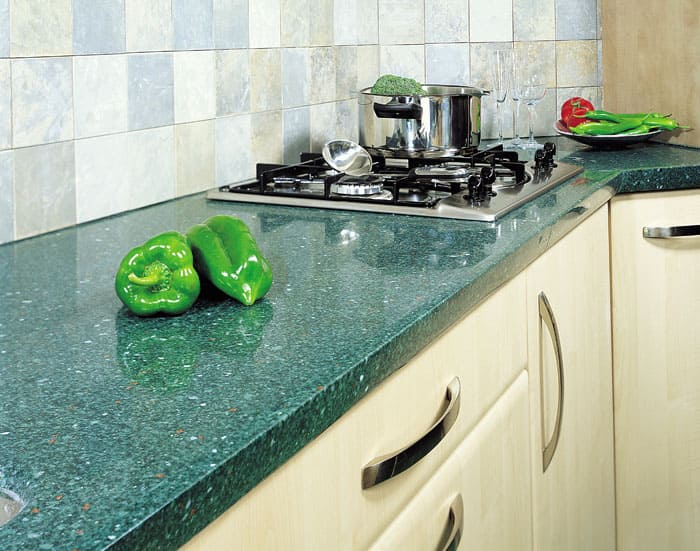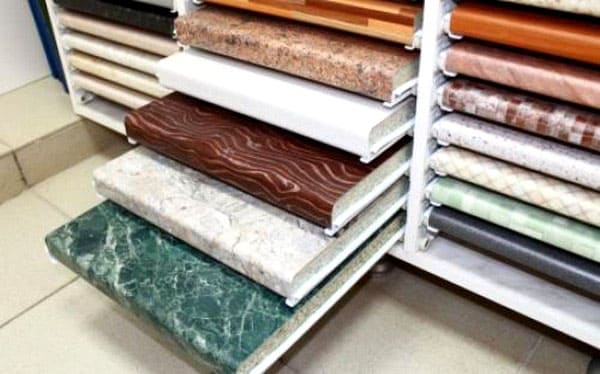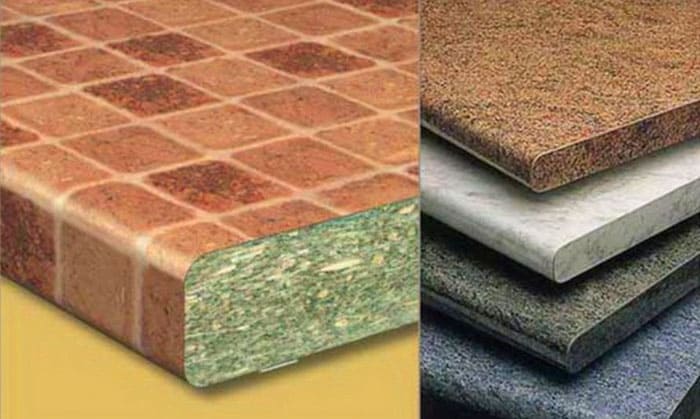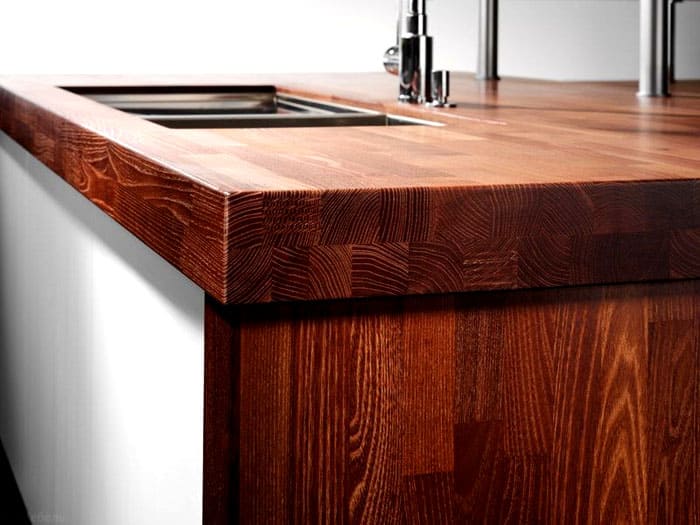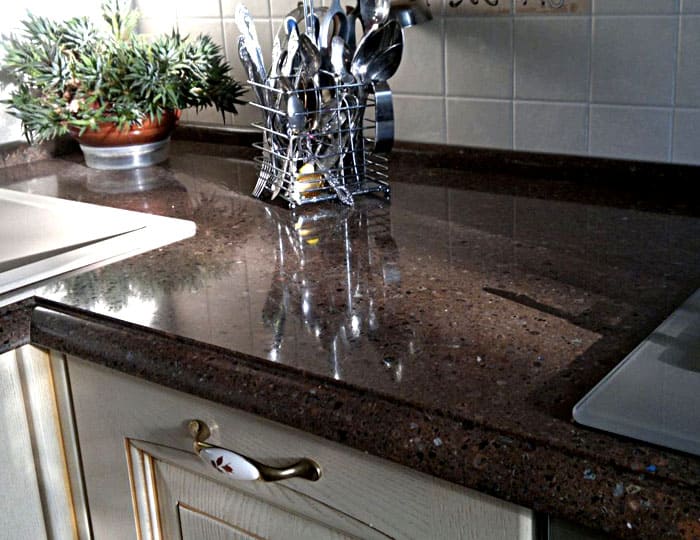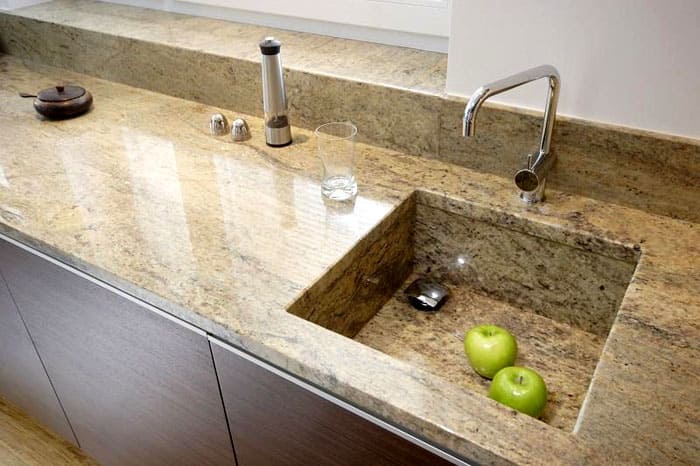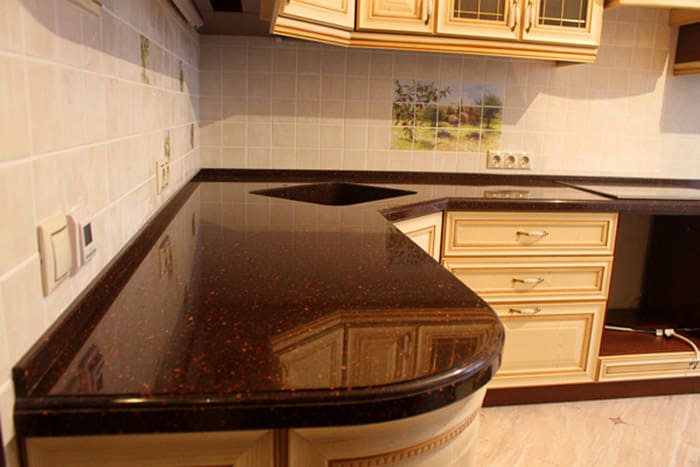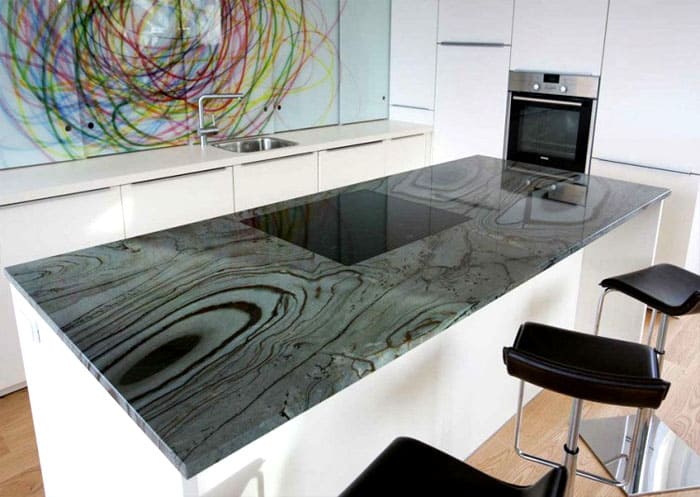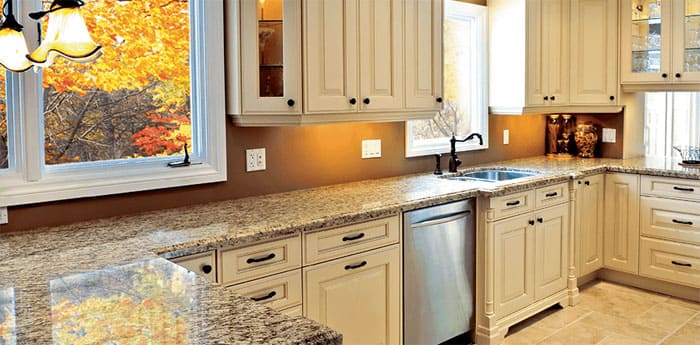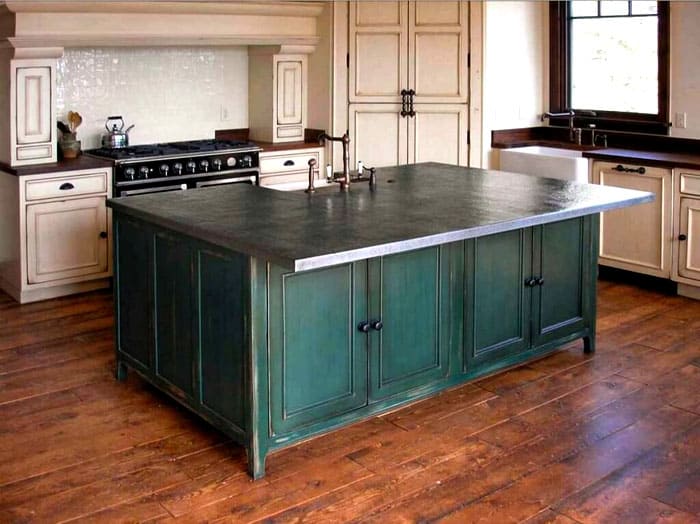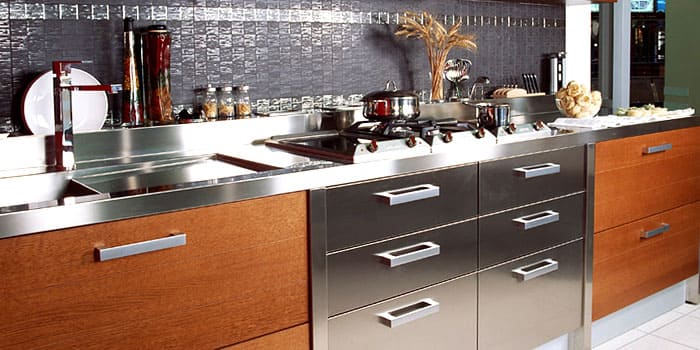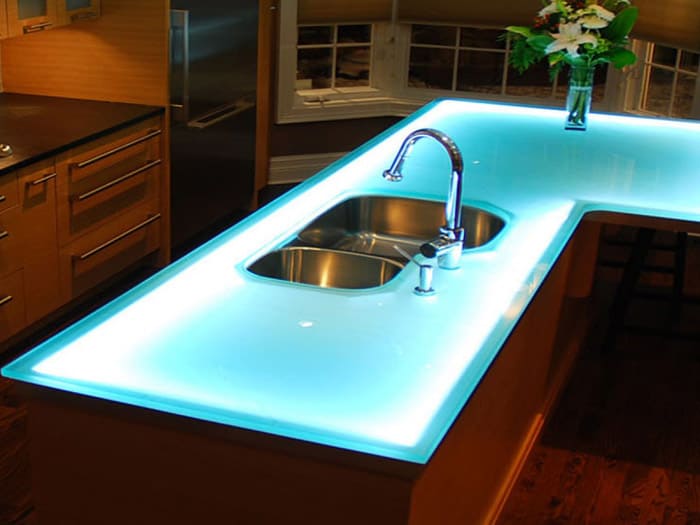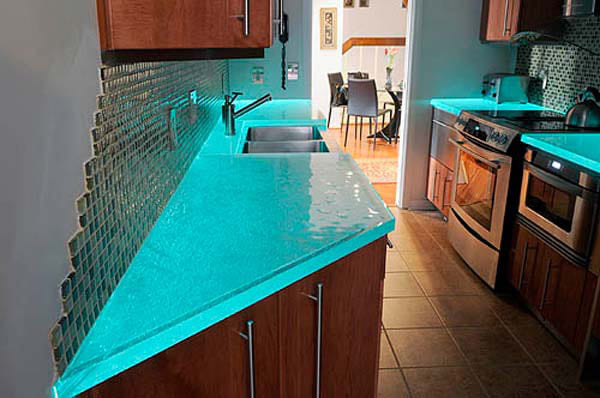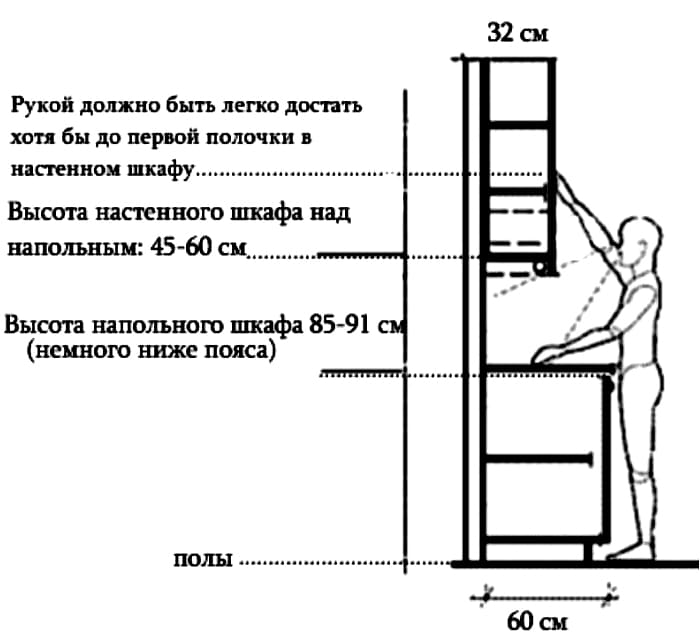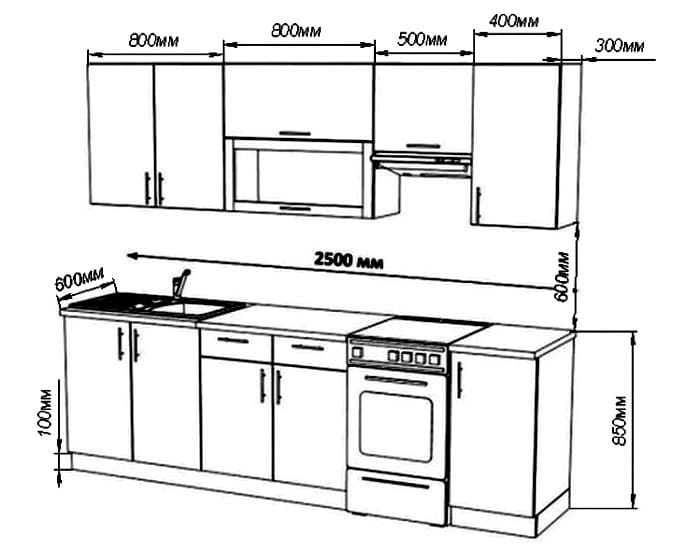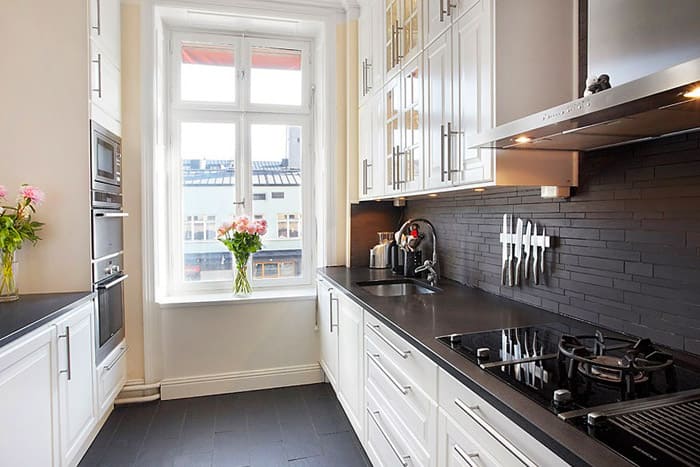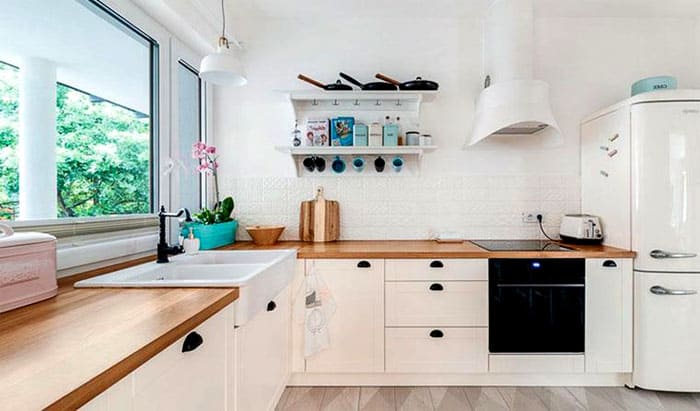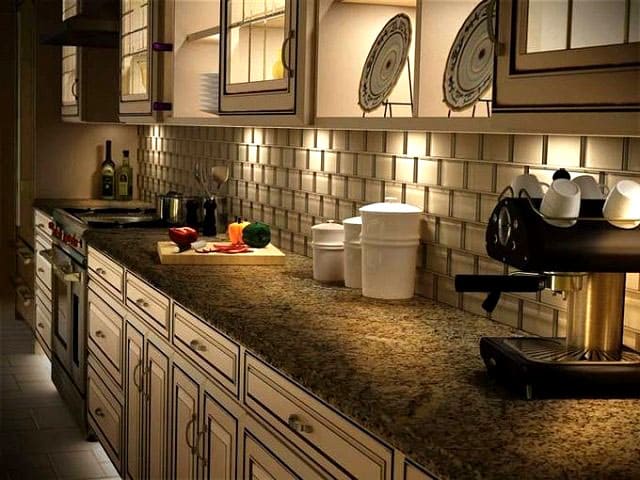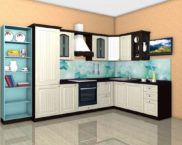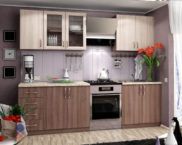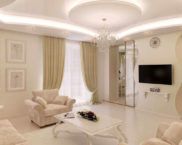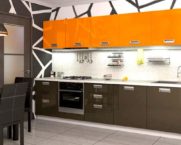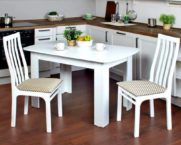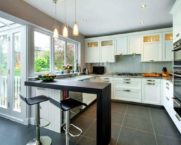What creates an impression and a working environment: choosing a worktop for the kitchen - views, photos, recommendations
The combination of all kitchen elements can be considered a decorative function of the countertop, but in addition, it is also a full-fledged work area. Therefore, a lot depends on the quality of the material: and room aesthetics, and the service life of the product. The editorial office of homemaster.techinfolux.com/en/ invites you to find out what kitchen countertops are made of, types of designs and features of choosing such a product.
The content of the article
- 1 Types of kitchen worktops: product material
- 2 How to choose a kitchen countertop: product size and interior style
- 3 Video: choosing a tabletop
Types of kitchen worktops: product material
Today, a one-piece countertop is held in high esteem, which creates the strongest impression. The absence of unnecessary joints is perceived as an advantage and a bonus to cleanliness - fewer joints mean fewer places where dirt can get.
There are a lot of materials from which manufacturers make tabletops for us. There are general requirements for them: products must be moisture resistant, easy to clean, not deteriorating from household chemicals, durable and resistant to abrasion.
Now we need to consider what the countertops are made of, and what are the advantages and disadvantages of this or that material.
Chipboard: beautiful and inexpensive
The popularity of laminated worktops is easy to explain. The products are based on Chipboard or MDF, but on top they are covered with a film or a layer of plastic. It turns out beautifully. But how long such beauty will last, now we'll figure it out.
Chipboard: performance and design
The most budget option, but worthy of attention. A good product must have a water-repellent impregnation - this means that water will not get inside the material.
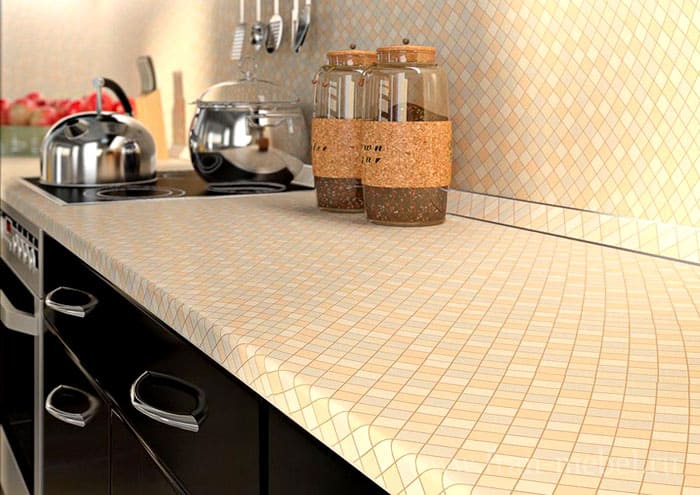
The design can be both refined and uncomplicated, there are plenty to choose from
PHOTO: stonecollection.ru
According to standards, the width of the product is Chipboard make in the range of 0.6-0.9 m, length from 3 to 4.2 m. The thickness is more variable and can be from 28 to 60 mm. She will also indicate a margin of safety, resistance to various influences. We look at the emission level: we are looking for the E0 or E1 indicator.
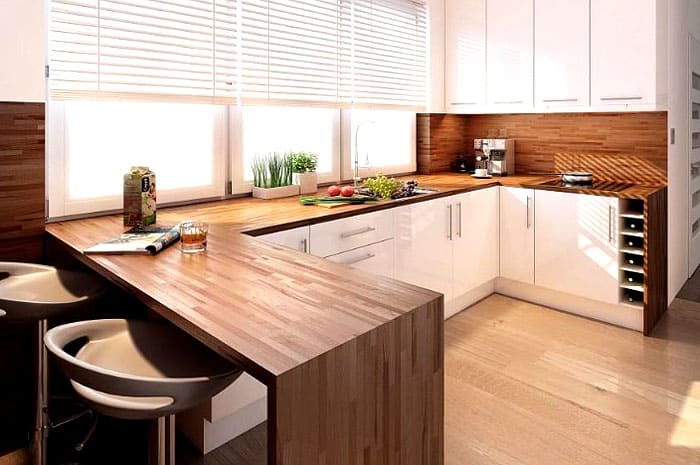
U-and L-shaped models or straight lines are produced as standard. But even under the order, manufacturers can make an original form
PHOTO: remont-shkola.ru
The ends will show whether the model is worth buying or not - they must be post-formed and covered with protective aluminum or polymer molding.
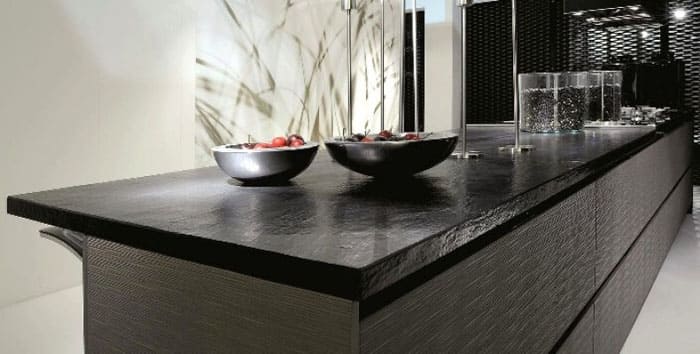
Externally, the countertops can resemble samples of natural materials, have a pattern, as well as matte, glossy and embossed designs
PHOTO: remont-shkola.ru
Advantages and disadvantages
We learned about what a chipboard countertop is, but how good it is can be judged only by comparing all the qualities.
Pros:
- the surface is easy to care for;
- inexpensive option;
- service life of 10 years or more;
- quality allows you to highlight both the working and dining areas;
- decent quality from a trusted manufacturer guarantees resistance to moisture and low mechanical stress;
- preservation of appearance;
- a large selection of decor.
Minuses:
- the edge is the weakest point of such products, as well as the place where the sink is inserted;
- a poor-quality product will not show the declared moisture resistance, especially in vulnerable places;
- Unscrupulous coating of the material leads to swelling from high temperatures, and the appearance of cracks from strong household chemicals.
Solid wood: a noble and solid material
Traditional production of furniture and its elements from solid wood remains in demand. The demand is explained by the decorativeness of the product, its environmental friendliness and good quality.
Performance and design of wood countertop
Solid wood as a material for countertops is highly popular in Europe and America. The ecological purity of this material has long been appreciated there.
In Russia, they often offer to buy a chipboard countertop, but veneered under a tree, and the buyer gets the impression that he has bought a real wooden product. This design will not show the performance inherent in natural wood.
Oak will be very wear-resistant, while larch will be very resistant to mold. Ash, birch, beech, walnut are inexpensive, pine and spruce are quite budgetary.
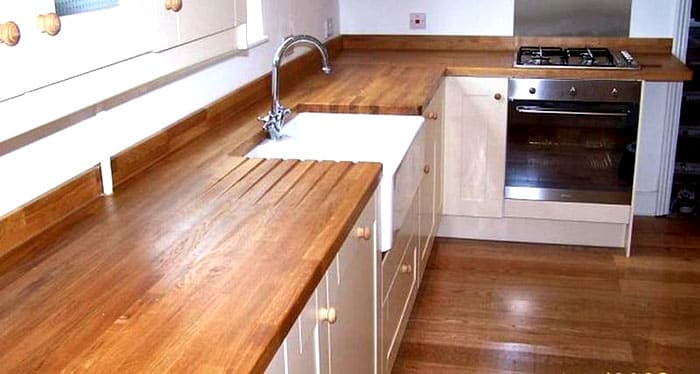
Wood will retain its qualities for many years if handled properly and treated with oil, wax or varnish
PHOTO: drev-dekor.ru
Solid wood worktops offer 38 mm width as standard, but you can save money by buying a not particularly wide 20 mm slab. It is reasonable to assume that you should not install anything heavy on a thin structure.
Advantages and disadvantages
As with other material, we will look at the pros and cons.
Pros:
- environmentally friendly products;
- ease of processing allows the manufacturer to produce objects of various shapes;
- the combination of a wooden surface with others looks harmonious and natural;
- the table top is suitable for any style direction in the interior;
- long service life - about 25 years;
- the ability to restore any part of the tabletop in different ways.
Minuses:
- you need to update the surface;
- weak moisture resistance without a protective layer;
- slabs are prone to scrapes and cuts from the knife.
Artificial stone: luxury in the interior of the kitchen
Fake diamond attracts attention for many reasons: it is external beauty, the ability to finish it on different surfaces, and good performance.
Performance and design
For countertops, acrylic and agglomerate panels are produced.
If the composition contains a third of natural crumbs, and the rest of the space is occupied by acrylic resins and pigments, then you have an acrylic tabletop. The agglomerates contain up to 95% natural chips, granite, marble, quartzite, which bind polyester resins and pigments.
Advantages and disadvantages
Let's talk about whether it is worth buying a working panel made of artificial stone.
Pros:
- strength is at the top of the list;
- resistance to mechanical stress, provided the thickness is 10-12 mm;
- the material is environmentally friendly;
- easy care;
- agglomerate plates are resistant to high temperatures;
- impressive service life;
- acrylic is flexible, which allows you to find a model of a non-standard shape;
- the acrylic surface can be restored with minor damage.
Minuses:
- high price;
- a dark surface will not hide defects from operation;
- if there is thermal damage, then they will be noticeable on acrylic;
- do not use metal sponges for cleaning;
- agglomerate tabletop does not exceed three meters in length;
- agglomerates are not repaired.
Natural stone: durability in a chic kitchen
The most durable option that has a number of qualities and performance characteristics. In the kitchen, with its microclimate and working atmosphere, natural stone will serve well and for a long time. This is a kind of status of the owner of the apartment, as the premises will definitely look elegant and luxurious.
Performance and design
The most popular products are granite, onyx and marble countertops. Nature has generously endowed these materials with beautiful shades and a unique pattern structure.
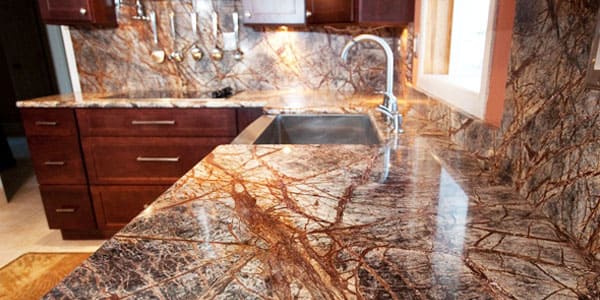
The designers appreciated all the possibilities provided by such stones, so this would be ideal for the kitchen.
PHOTO: mosrif.ru
Manufacturers offer stone slabs with a thickness of 20-30 mm. This is enough for the stone to show its qualities and beauty.
Advantages and disadvantages
We will sing an ode to the stone in the pluses section:
- there is no doubt about the moisture resistance of the material;
- these are very resistant to abrasion plates;
- almost no risk of mechanical damage;
- ease of care;
- long service life in its original form;
- external beauty of natural material.
Minuses:
- the cost of a countertop made of natural stone is high, sandstone will be the cheapest;
- the impressive weight leads to difficulties in installation;
- marble is not as strong;
- do not use abrasives for cleaning.
Metal: stylish modernity
Metal hasn't become a new word in kitchen design, it just took its rightful place among other materials. The appearance of the products will seem unusual at the border of futurism and industrialism.
Performance and design
Metal has long been used to make modern food service countertops. The stainless steel passed all possible and impossible tests, so the designers decided that a worthy application could be found in apartments.
At the heart of the home countertop is an MDF or chipboard plate, and on top it is covered with a 0.8 mm thick stainless steel sheet. The edges are neatly folded by the press, the seams are welded and sanded to an almost traceless state.
Advantages and disadvantages
Such material also has its own characteristic features, which are considered as pros and cons.
Pros:
- long service life;
- excellent level of durability;
- not afraid of moisture;
- not afraid of aggressive household chemicals.
Minuses:
- high price;
- cool surface;
- the material does not hide the noise from impacts;
- the possibility of dents and scratches;
- fingerprints are visible;
- fits only some modern styles.
Glass: modern, graceful and fragile beauty
The glass tabletop will have such qualities as external aesthetic perfection, but also characteristic fragility. Yes, this is not the glass that we see in the windows. But such material will surely lose in the competition for strength with natural stone.
Performance and design
Glass worktops fit organically into the kitchen space, designed under high tech, modern, techno, loft... In this case, it is advised to arrange other parts of the kitchen under glass - the effect will be stylish due to the refraction of light.
If the surface of the material is hardened, then there is no need to worry about fragility. Even a strong mechanical shock will occur, such glass will not break into dangerous fragments, but will remain assembled, albeit severely damaged.
Advantages and disadvantages
Glass also has advantages and disadvantages.
Pros:
- glass does not allow moisture to pass through;
- if you follow the rules for using the material, it will last a very long time;
- environmentally friendly products;
- resistance to high temperatures;
- interesting lighting and decor options;
- easy care.
Minuses:
- high cost;
- chips and scratches may appear.
How to choose a kitchen countertop: product size and interior style
After analyzing the qualities of suitable materials, let's start studying the selection parameters. We need to know how to select the dimensions of the product and fit it into the interior style.
By size
Today, not everyone has standard dimensions of the kitchenand designers vary everything they can by playing with furniture and space. For the right choice, you need to consider a number of nuances: we take into account the height of the countertop from the floor, the length and depth.
It should also be taken into account that the tabletop must fit into the space, while maintaining ergonomics.
The height of the people who will cook is taken into account first of all.
By interior style
The harmonious look of the worktop will give the kitchen the right atmosphere. It is important to be able to combine it with an apron and kitchen set, since the choice of textures and shades is simply incalculable!
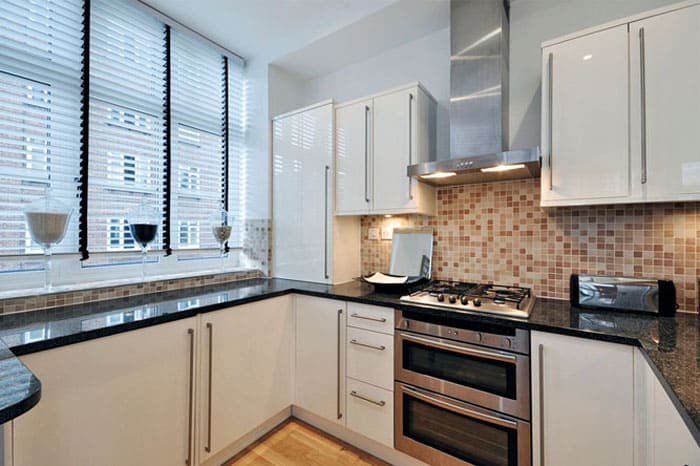
The elegance of black is undeniable, especially when it is an elegant accent in the interior.
PHOTO: ikuch.ru
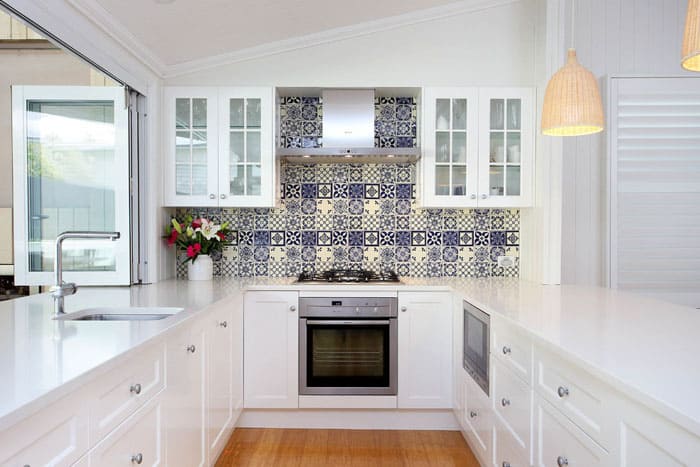
The white surface is good for Mediterranean and Scandinavian style. This color can become a background or an independent accent.
PHOTO: design-homes.ru
Perception also plays a role: matte or glossy surfaces look completely different. If you want more different highlights and shine, then you should pay attention to the gloss.
What material do you consider the most practical and beautiful for the kitchen?



